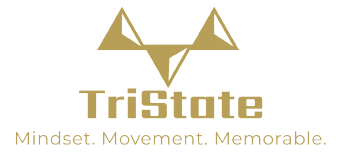The Best Accessory Lifts for Olympic Weightlifting
By Coach Dan — Tri-State Training | Mindset. Movement. Memorable.
When it comes to Olympic weightlifting, accessory work is where longevity and performance meet. The goal isn’t just to lift heavier — it’s to stay healthy enough to keep lifting for years to come.
For most lifters, the longer you can stay in the sport, the better you’ll get at it. Consistency compounds. And the best way to stay consistent is to build strength and stability in the areas that keep you lifting safely and efficiently.
That’s where accessories come in.
The Purpose of Accessory Work
At Tri-State, we treat accessory work as more than just “extra volume.” It’s the foundation of staying healthy, preventing injury, and allowing athletes to train more over time. The lifters who can train the most — consistently, not recklessly — are the ones who improve the most.
Accessory work gives your body the stability, balance, and movement control to handle heavy barbell work. It builds the support systems behind your big lifts.
So when we talk about accessory training, we’re not talking about fluff or filler. We’re talking about the work that makes the work possible.
The Staples: Squats, Pulls, and Unilateral Work
If I had to name the cornerstone of any accessory plan, it would always start with squats and pulls.
Squats (front and back) are the most effective way to build pure strength.
Pulls (clean/snatch variations, RDLs, etc.) develop force production and reinforce good positions.
You’ll always find some variation of these in our programming because they provide the best return on investment for a lifter’s time and effort.
The other non-negotiable piece is unilateral work — single-leg and single-arm movements. These help athletes build balance, symmetry, and control that barbells alone can’t give. Movements like split squats, step-ups, single-leg RDLs, or unilateral pressing variations train stability and improve coordination, especially for athletes who spend a lot of time in bilateral barbell work.
These accessories are what keep lifters strong and stable — not just powerful.
When and How to Individualize
The key to great accessory programming isn’t throwing every lift at an athlete. It’s knowing what they need most, and when they need it.
We individualize accessory work based on where the athlete is in their training cycle.
Before high-volume strength cycles, we prioritize stability and mobility work to prepare joints and stabilizers for load. Jumping into heavy squats without that preparation is a fast track to discomfort or injury.
During peaking phases, the goal shifts. We focus on movements that make the athlete feel strong and keep the central nervous system sharp — explosive pulls, faster tempo squats, and positional holds that reinforce confidence under heavy weight.
Every piece of accessory work has a purpose tied to the larger plan. Nothing is random.
Avoiding the Social Media Trap
One of the biggest mistakes I see lifters make is programming accessories based on what they see online.
Social media is full of 30-second clips of “must-do” accessory lifts that might look perfect — for someone else. What you’re not seeing is the context behind that athlete’s training, experience, and weaknesses.
Just because something worked for another lifter doesn’t mean it’s right for you. In fact, the more random your accessory choices, the less effective your training becomes.
If something feels off or you’re struggling with a specific position, the solution isn’t scrolling — it’s communicating.
Talk to your coach. Ask questions. Share feedback about how your body feels and what’s working or not working.
Good accessory programming is built on communication, not imitation.
Putting It All Together
The best accessory work for weightlifters doesn’t just build strength — it builds resilience.
When you train with intention, every lift has a purpose:
Squats and pulls build force.
Unilateral work builds balance.
Stability and mobility work build longevity.
At Tri-State, our next training block focuses on exactly that — building the foundation that lets athletes train harder, smarter, and longer. Whether you’re a seasoned competitor or new to the sport, the time to build your foundation is now.
📞 Book a Strength Call with one of our Tri-State coaches and learn how we integrate accessory work into your personalized program — so you can train pain-free, lift better, and stay in the sport for the long run.
